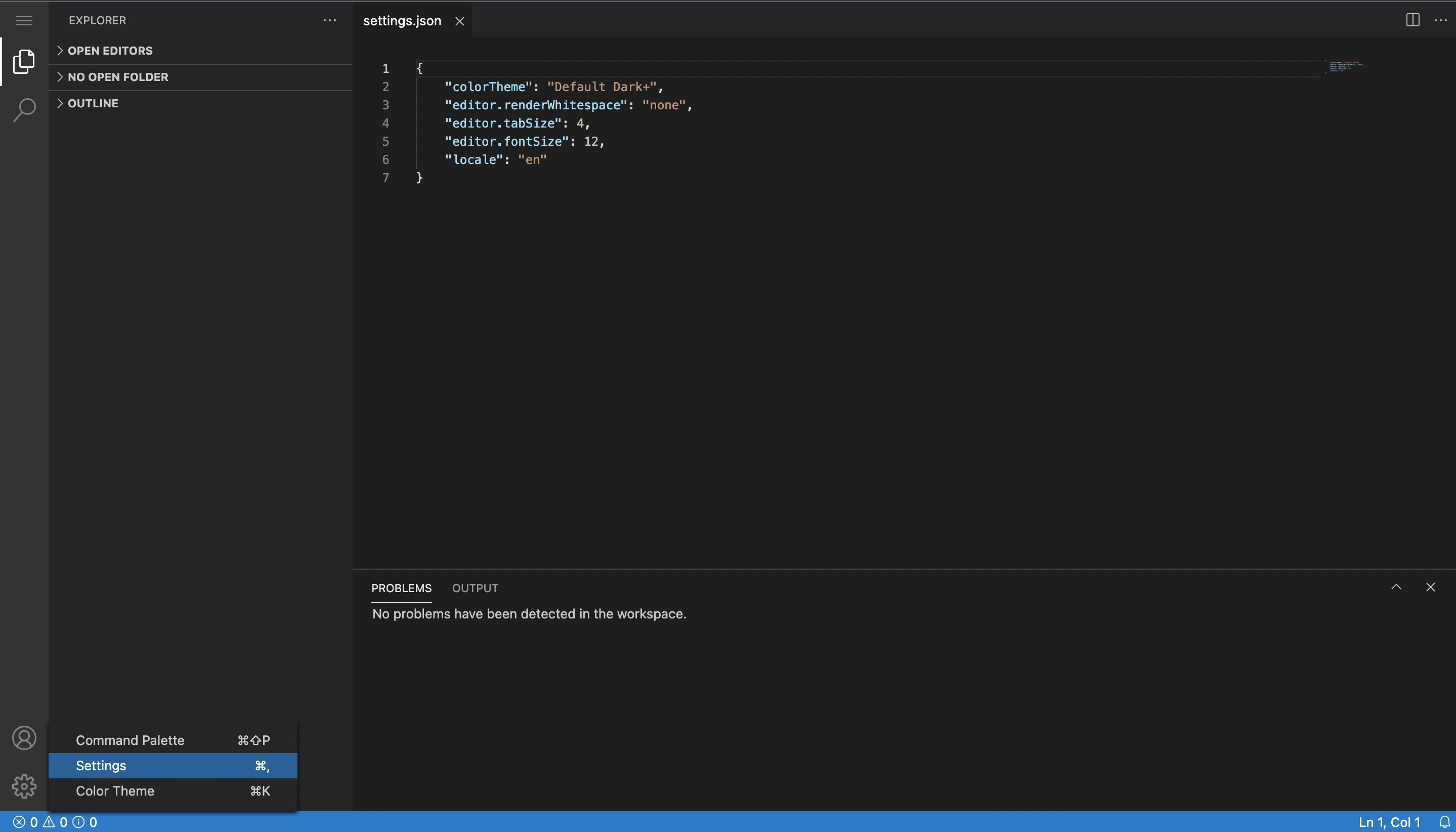Settings
Molecule has some basic settings built-in, such as the basic settings of the editor (Monaco Editor), color theme (colorTheme), localized language (locale), etc.

The above picture shows the configuration items colorTheme, editor.renderWhitespace, editor.tabSize, editor.fontSize, and locale. Users can modify the configuration online according to their needs. Among these configuration items, colorTheme and locale need to be configured according to the current extended support.
In addition to supporting online configuration modification, Molecule supports developers to customize configuration items through extensions.
Open settings
The first and fastest way is to use the shortcut key
Command/Ctrl + ,;The second way is to use the QuickAccess panel, open the access panel with the shortcut key
Command/Ctrl + Shift + P, and search for settings;The last way is to access the settings menu on the ActivityBar.
SettingsService
Molecule has a built-in SettingsService object. In addition to extended settings, in some scenarios, developers can use it to do some basic operations:
// Get the setting configuration object
molecule.settings.getSettings();
// Update settings configuration
molecule.settings.update(settings: ISettings);
Custom configuration items
tip
All code demos in this part are based on the molecule-demo project in Quick Start.
Molecule supports you to extend the current configuration items to meet your customized requirements. Let's see an example together!
If you want to add a project.id field to the configuration file as follows:
{
"colorTheme": "Default Dark+",
"editor.renderWhitespace": "none",
"editor.tabSize": 4,
"editor.fontSize": 12,
"locale": "zh-CN",
"project.id": 1
}
First, define a SettingsExtension object, and define the project extension field you want to add under the customSettings object:
export const customSettings = {
project: {
id: '1',
},
};
export class SettingsExtension implements IExtension {
id: string = 'ExtendSettings';
name: string = 'Extend Settings';
appendSettingsItems() {
// Append the extended items
molecule.settings.append(customSettings);
}
handleSettingsChange() {
const panel = molecule.panel;
// Listen to the Settings change
molecule.settings.onChangeSettings((settings: any) => {
alert('Settings changed:' + settings.project?.id);
// do something
});
}
activate(extensionCtx: IExtensionService): void {
this.appendSettingsItems();
this.handleSettingsChange();
}
dispose(extensionCtx: IExtensionService): void {}
}
Then, you can use the onChangeSettings method to monitor the changes of the configuration items, and then do the corresponding processing. The complete example refer to molecule-example.
tip
Currently, Molecule does not cache user-modified settings, so after reloading the page, these configuration information will be lost. If you want to avoid this situation, you can use a solution such as localeStorage to store the user's configuration information, and then use SettingsService to update the configuration information.